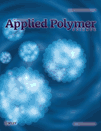“Pore/bead” membrane for rechargeable lithium ion batteries
Abstract
A special “pore/bead” membrane was prepared with a mesoporous inorganic filler (MCM-41) and a P(VDF-HFP) binder. The special “pore/bead” structure of the MCM-41 filler not only enhanced the puncture strength of the membrane but also improved its ionic conductivity. The puncture strength of the dried “pore/bead” membrane (MCM-41 : P(VDF-HFP) = 1 : 1.5) was 18 N, and showed a slight decrease (16 N) after the membrane was wetted by liquid electrolyte. Additionally, the composite membrane showed excellent thermal dimensional stability. The composite membrane could be activated by adding 1M LiClO4-EC/DMC (1 : 1 by volume). The activated membrane displayed a high ionic conductivity about 3.4 × 10−3 S cm−1 at room temperature. Its electrochemical stability window was up to 5.3 V vs. Li/Li+, indicating that it was very suitable for lithium-ion battery application. The battery assembled using the composite electrolyte also showed reasonably good high-rate performance. The approach of preparing a “pore/bead” membrane provides a new avenue for improving both the conductivity and the mechanical strength of polymer electrolytes for lithium batteries. © 2012 Wiley Periodicals, Inc. J. Appl. Polym. Sci., 2013




